Buenos Aires
Buenos Aires
First of all, a little information about Buenos Aires, the capital of Argentina. The city is located on the west bank of the Río de la Plata, has around 16 million inhabitants and is an autonomous district. ‘Buenos Aires’ is Spanish and means ‘good air’.
With around 20,000 buses and over 40,000 taxis, the air is only good these days when there is a breeze from the Atlantic Ocean blowing through the city. Please don't forget the thousands of private cars and motorbikes that are on the roads every day.
This plethora of vehicles is travelling through the city every day on the biggest multi-lane roads I have ever seen. This is where I saw my first 11-lane one-way street, or a 125-wide road. I didn't manage to cross the whole of Av 9 de Julio in one green phase. Loud and smelly is also the Av. de Libertador, along which I walked from Retiro to Palermo. People walk dogs here and homeless people sleep here, but walking 1.5 km along it is not really fun.
The bus frequency on the major roads is impressive. When the traffic lights turn green, it's bus after bus
Telephony
On the first afternoon I went to San Nicolás, the centre of Buenos Aires. Not by the direct route but through Monserrat. Here I made my first attempt to get a telephony SIM from Movistar. They only sent me to a branch in Florida.
After crossing Av 9 de Julio, I entered a busy area of the city. Calle Florida is the shopping pedestrian zone. It hosts a multitude of retail outlets, shopping centers and people offering to exchange dollars and euros every 5 metres. Of course, there are also cambios in San Nicolás, which were more appealing to me 😉.
I only wanted to get a tourist SIM from Movistar, but after waiting 15 minutes at the next branch I was told to try again the next day. I switched to Plan B and got the SIM from the nearest kiosk. After it was activated, which is quite nerve-wracking with Movistar, I topped it up at another kiosk. I now also have a Claro SIM. It's so easy to activate....
The barrios
A little history. The city was founded in February 1536 by Pedro de Mendoza. The historic centre of Buenos Aires comprises the two Barrios of San Nicolás and Monserrat. Many more have been added over the centuries. You can find a list of all the barrios here
The aim of my 3 day tours was to get to know the barrios better and I planned the tours in Komoot. There were suggestions in Komoot, which I adapted to my ideas.
For example, La Boca, which was originally a shipyard. Immigrants started building houses from surplus materials in the 19th century. For me, La Boca consists of at least 2 areas. On the one hand, the tourist area around Caminito Street, with colorful buildings and street artists, next to the La Bombonera football stadium. On the other hand, the socially weaker residential areas in La Boca. I spent more time there than on the Caminito
⚓ The Komoot Tour with more pictures can be found here
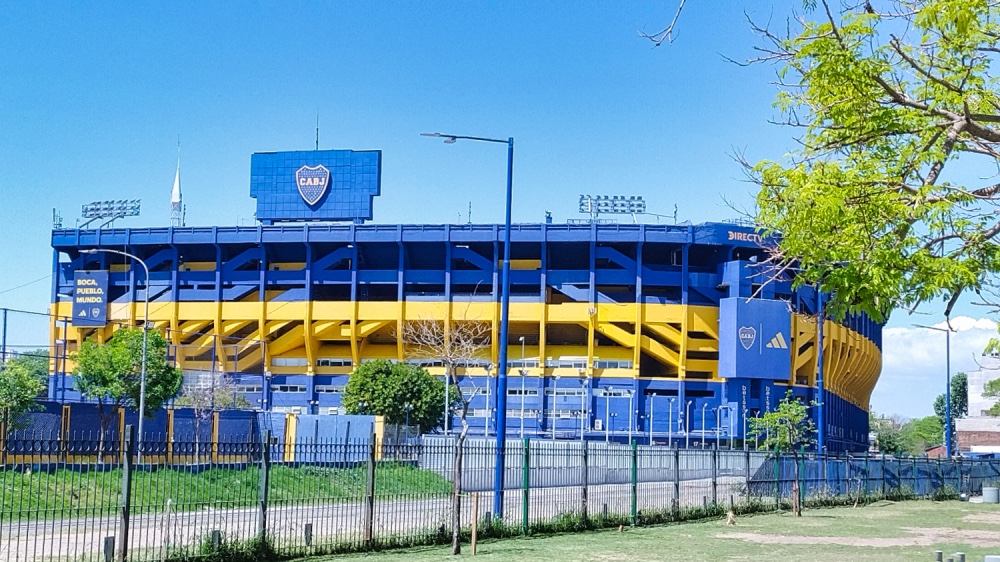
Out of laziness, I wanted to try a bus on the way to San Telmo that day. I chose the bus according to the signs, which you can find on the windscreen, and the direction in which the bus travels. I had no way of knowing that my bus would turn left two traffic lights later. Maybe I would have got to San Telmo, but I got off after a few stops and took a taxi for 3,000 pesos. It helps when traveling by bus if you speak Spanish better than I do!
Or San Telmo, which is famous for its narrow, cobbled streets. The richest families in the country lived here until the survivors of yellow fever moved to the north of Buenos Aires in 1871. Today you can find antique shops, art galleries, cafés and the market here. I finally found my choripán at the market. Argentinian choripán is a coarse sausage made from beef and pork, which is cut length ways down the middle and served on a bread roll. Chimichurri is used instead of ketchup or mustard.
In San Telmo, the heart beats for the tango. You can either learn it in tango schools, watch it in theaters over dinner or, like me, watch an open-air class in a park.
As I was exploring Buenos Aires on foot, Puerto Madero was next on my tour. It is a hyper modern neighborhood located between the Rio Darsena and the banks of the Rio de la Plata. The mixture of luxury and modernity reminded me more of Shanghai and distinguishes Puerto Madero from the old neighborhoods and also from Recoleta, Palermo, Belgrano or Núñez.
⚓ The Komoot Tour with more pictures can be found here
In Puerto Madero, old industrial buildings have been exclusively renovated and are now offices, flats, restaurants and bars. Towards the Rio de la Plata, skyscrapers shoot up from the ground and border the Reserva Ecológica Costanera Sur nature reserve. Nice for a walk and relaxing on the banks of the Rio de la Plata.
To get to Recoleta, I used the SUBTE, the subway. In contrast to the various bus lines, the SUBTE has a route network that you can understand without having to study it for hours. Recoleta is one of the wealthiest neighborhoods in the city. The barrio offers beautiful, dignified old and newer buildings, wide boulevards and cafés, restaurants and shops.
But Recoleta also offers museums and probably the most visited cemetery in the country, the Recoleta Cemetery. María Eva Duarte de Perón, aka Evita Perón, is buried here. I didn't visit it because there were 3 school classes in front of me in the queue. As I walked through the other parks, I realized that I had arrived in Palermo.
⚓ The Komoot Tour with more pictures can be found here
Palermo is huge. On the one hand, there are the parks such as Tres de Febrero Park, Jardín Japonés and the Galileo Galilei Planetarium, and on the other, there are more upmarket boutiques, hotels and restaurants.
The much smaller Jardín Botánico Carlos Thays appealed to me. The Jardín is set up as an educational garden and I saw yerba plants and shrubs for the first time.
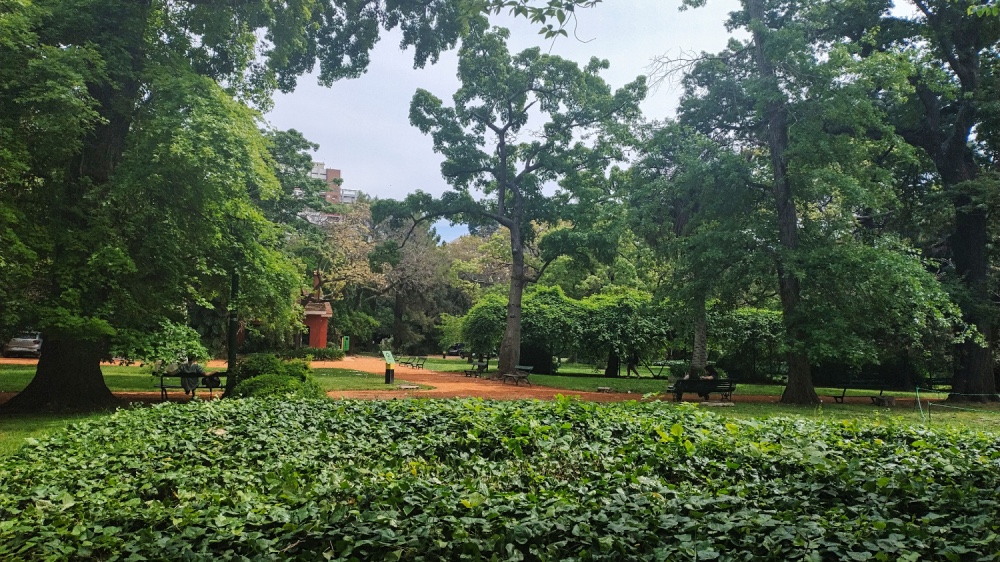
I should probably mention that there are over 250 more or less important monuments in Buenos Aires. These include the María Eva Duarte de Perón Monument in Recoleta, the Floralis Generica and the Monumento de los Españoles. I found the various smaller monuments much more interesting. You stumble across them when you're wandering around Buenos Aires.
I went on all my excursions without being accompanied by a local, but I did inform myself beforehand or listened to the advice at the hotel. Apart from the area around the Retiro railway station, I never had the feeling that I was in any danger. I was also too tired in the evening to walk around the neighbourhood.
Food
When it comes to Argentina, every guide talks about asados or parrilla, huge portions of grilled meat. Next to my hotel was El Rancherito, not a Michelin-starred restaurant, but honest local cuisine. I saw below portion and, as I was traveling alone. I postponed it for another time. 2 people accepted the challenge to eat 1kg of meat, served on a table grill with charcoal.
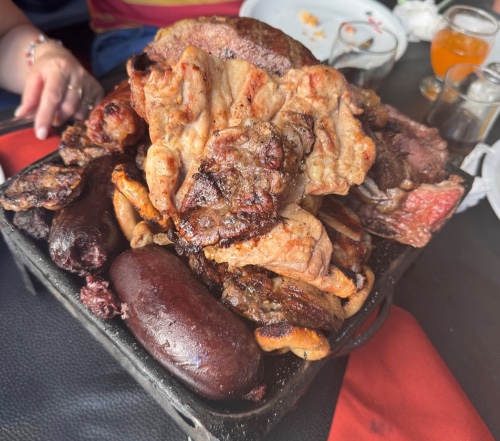
I was more fond of the empanadas. You can get them almost anywhere food is sold, they don't cost much and are perfect when you're walking through the city.
Alfajores are the sweet snacks that are eaten from breakfast to dinner. They are actually two or more biscuits filled with dulce de leche and covered with chocolate or a sugar glaze. And there are all kinds of variations.
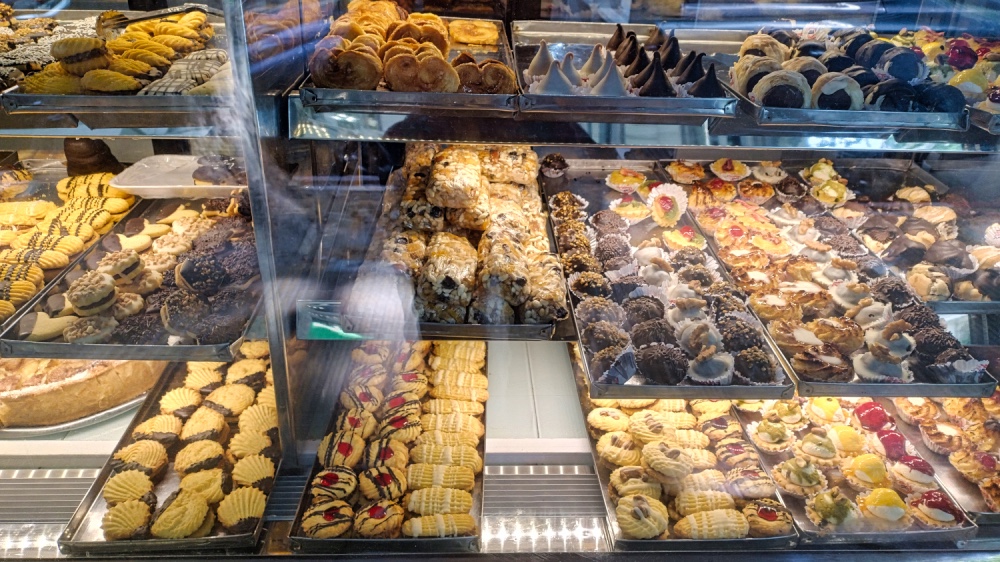
I also include medialunas, because they are available filled with Nutella, covered with jam or plain.
2 medialunas with a coffee con leche are a typical breakfast. I also found sandwiches, cakes or a cream yogurt with fruit.
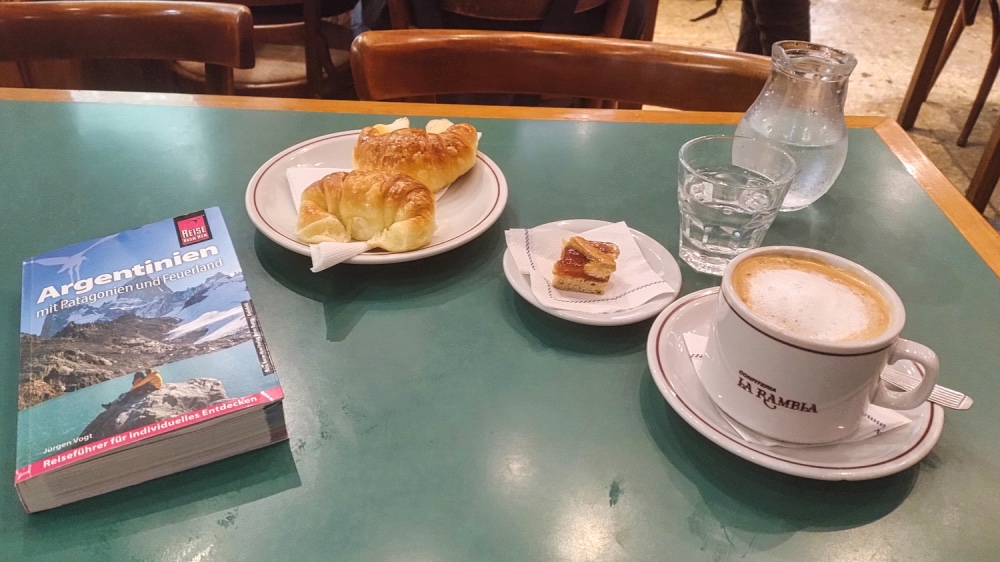
And then you can also find pizza and Milanesa. What can I say, they have little to do with the original in Italy.
The Milanese is a Wiener schnitzel made from beef or turkey. On top you can choose between tomato sauce, cheese, ham and countless other options such as blue cheese, onions, fried egg, mushrooms. Sometimes it comes on a bed of french fries. And the portions are large. The night after my first Milanese, I had to fight to settle my stomach.
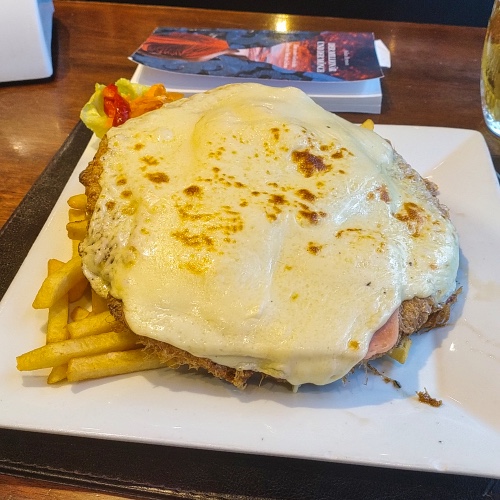
The pizzas, also called fugazetta, are a bit American, so thick and topped with lots and lots of cheese and look greasy and hard to digest. I ate an eighth and was full. I was lucky that the hot cheese didn't drip onto my trousers. I also saw a version that looked like an Alsatian Ziebelkuchen.
At the end of my few days in Buenos Aires, I took the ferry to Montevideo. It's a relaxed 2.5-hour journey from the Buquebus terminal to Montevideo.
The Stage
More Pictures
Videos
Latest Posts
-
 Closer to the end - South Colombia till Medellin
Closer to the end - South Colombia till Medellin -
 Ecuador - La Balsa to Tulcan
Ecuador - La Balsa to Tulcan -
 Lima to Ecuador
Lima to Ecuador -
 Lima from beginning to end
Lima from beginning to end -
 Cuzco to Lima
Cuzco to Lima -
 From Lake Titicaca to Cuzco
From Lake Titicaca to Cuzco -
 Bolivia, in search of diesel
Bolivia, in search of diesel
Post Info
Date | October 2024 |
Status | Planned |
Last updated | 19 December 2024 |
Page read | 521 |
































